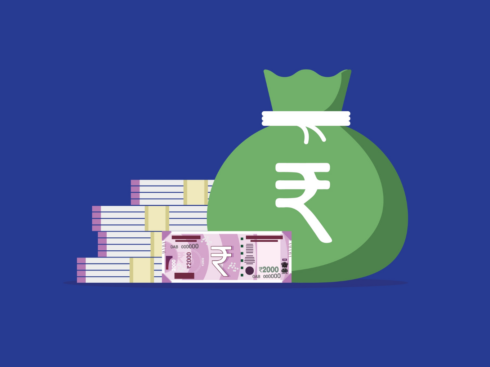
 Ankit Jain
Ankit JainGrowth & Monetization @ Cucumbertown | ex-Private Equity investor | Moved from ‘making investments’ to ‘growing investments’
Often, inexperienced entrepreneurs will make the initial launch of a product by making announcements to:
- Family and friends
- Start-up focused communities and fellow entrepreneurs
- Blog / Twitter followers, if there is a decent enough personal online brand
- Larger tech world; with help of shout-out by investors, participation in launch events and PR in tech media
…. And then silence.
Each of the above will create a temporary buzz, flurry of signups. The bigger the megaphone, more the spike. But inevitably, the entrepreneur will discover that the ‘spike’ lives up to its literal meaning, it dies off. It also becomes obvious that users who sign up are mostly curious bystanders — friends, ex-colleagues, other entrepreneurs, competitors, investors. They are not the actual target users for whom the product was built. They don’t return to use the product and are just dead weight in the system.
What is the Growth Hacker going to do different?
Reaching out to the intended user base is a process demanding blood, sweat and tears. Maybe not that dramatic, but no less painful. It takes experience to learn how to even go about undergoing this pain and reduce it as much as possible. An informed Growth Hacking mindset can help a lot.
Once these (mostly) one-time methods have been checked-off, the Growth Hacker starts trying out different distribution channels to find a sustainable way to reach out to target users. The aim is to find out what works better for their product. Choices made at this point are driven by qualitative considerations — whether a channel seems to fit the nature of the product and target users. Later, the Growth Hacker will optimize further within the channels that seem to work to arrive at the channel which provides maximum desired user behavior per $ spent.
[Notes:
- Growth Hacking is not just about bringing traffic for user acquisition; other aspects like effective onboarding, engaging and retaining existing users are equally important pieces of the puzzle
- A methodical search for a right distribution channel is preceded by the Growth Hacker convincing themselves that the product has reached the Product/Market fit. Without a P/M fit, putting efforts to distribute a product is like trying to light a fire on wet wood
- Finding a right distribution channel in parallel involves iterating to get the best messaging which resonates with target users and optimizing conversion funnels
- Below discussion is limited to use of online channels; a Growth Hacker will also use offline channels like meetups, events and good ol’ hustling]
How fit is the channel for the task at hand?
A Growth Hacker will consider various qualitative aspects to check for a fit between their choice of a distribution channel to experiment from the gamut of options available (including paid advertising) :
- Demography target— teenagers will not flock on a property purchase website, grandmas will usually not spend time on a first person shooter gaming portal
- Users’ current context — a college student visiting a fantasy football league website is not at the moment in mental frame to look for student loan offers, but will be very much interested in buying football club merchandise
- Pre-existing awareness of problem — many people will be searching online for “best used cars comparison site” but very few people ever looked up “best social networking site” before ‘social networking’ was even a term
- Budget constraint — fixed cost of running an ad on a A-league website should fit their pocket, or else the Growth Hacker would advertise on a platform which allows running a campaign even with a small budget (maybe as little as $10)
- Lead time available — the Growth Hacker may be looking for quick access to just 100 users to jump start beta testing of the product but it takes 3 months to build a decent follower base on the channel to whom they can shout out to (and they don’t have any right now)
- Access to gatekeepers— the Growth Hacker may not have access to a Buzzfeed Editor with whom they can negotiate on running a promotional campaign but can sign-up in minutes for an Google AdWords account to launch a keyword-driven campaign
How will the channel pan out?
There is a method to the madness when a Growth Hacker thinks about choosing a distribution channel. Each distribution channel is subjected to these 3 questions:
- Is it scalable? — A “Scalable” distribution channel should fulfill at least one of the following. (a) Reach per unit effort to setup & run the channel should decrease over time (i.e. the channel should afford some level of automation & run without much manual intervention once setup), (b) the channel allows to reach a high % of the Total Addressable Market.
- How much does it cost? — Growth Hacking lore consists of anecdotes in which a resourceful Growth Hacker subverted an existing channel (website) to get free traffic (i.e. without any paid advertising) for user acquisition. Unlimited free traffic is the El Dorado of Growth Hacking world.
- What is my level of control? — Every channel, where no formal partnership contract has been forged with the Growth Hacker, brings in uncertainty in Growth Hacking efforts. Smart hacks, in which traffic from a website is siphoned off in a manner which was not intended by the website, have longevity only till the time the owners take preventive action. In other cases, the external source may change its algorithms or rules and suddenly destroy traffic which it was happy enough to provide till then for free. Also, competing new products try to best each other in getting traffic. A mature external channel is constantly trying to either prevent siphoning off of traffic (if it is not in line with the channel’s business objectives) or level the playing field for everyone. External channels also end up giving preferential access to their traffic, either overtly or covertly. Almost every new product will have to rely on external channels for a considerable part of their growth curve. These risks come with the territory. A lot of ‘hacking’ in Growth Hacking stems from utilizing the small window of opportunity where the Growth Hacker is among the first ones to utilize the external channel before the channel shuts free traffic and/or other Growth Hackers jump on the bandwagon diluting the opportunity.
How to put a channel into action?
Finally, after considering the fit of the channel for the current target of growth and evaluating it for the 3 questions mentioned earlier, the Growth Hacker associates the channel (or traffic source) to be under one of the broad classifications below. Each classification has its own detailed body of knowledge of best practices and provides a mental model of what finer details will need to be taken care of to effectively utilize the channel. Each example within the same classification too has its specialized techniques to gain maximum mileage.
- Searches & recommendations — People search online and also get recommendations for content / products based on their usage patterns. A Growth Hacker optimizes their website content / app for search engines to properly read & categorize the content and adheres to mechanics by which content is deemed valuable by respective search engine ranking algorithms (“Search Engine Optimization”, “Search Engine Marketing”, “App Store Optimization”). This is a vastly scalable, free source of traffic. A search engine is interested in sending traffic to the best content for a search query. Hence, if the Growth Hacker has built a reasonably high quality of content, there is also a reasonable certainty that once they build a traffic baseline, it will continue at least at same level unless a superior source of content comes up. However, after what time duration and on what exact parameters (and weightage) does a search engine sign-off on the Growth Hacker’s content’s quality is not certain. Thus, level of control is medium to high. Examples: Organic traffic (not paid listings) from Search engines; YouTube search and recommendations; mobile app stores search and “Featured” list; e-Commerce search and recommendations; plugins / extensions / themes / marketplace search and recommendations
- Sharing content by users to their social network — User initiated sharing of content pieces within the product (e.g. Quora answers) or viral marketing material (e.g. “Mac vs PC” string of video commercials) puts the product in front of other potential users, who are part of the existing user’s social network. The Growth Hacker tries to leverage social validation to encourage potential users to try the product. This is again a scalable, free source of traffic with level of control on lower side.Examples: Sharing content to social network via embeddable buttons on the website; auto sharing with Facebook Open Graph stories (Tip: the Growth Hacker makes use of appropriate meta tag standards to enhance look-n-feel of shared content’s appearance by integrating it seamlessly into native UX of target network; like microdata formats & Open Graph meta tags handled in Facebook newsfeed, Twitter cards, Google+ stream, Pinterest rich pins)
- Followers on social media — Fundamentally, this is a brand building exercise. The Growth Hacker tries to build a direct communication channel to a large number of people for both user acquisition as well as retention & engagement of existing users. This is not as scalable a method because constant effort is required to keep the communication fresh, interesting and relevant. This can be free till the time a channel decides to give preferential treatment to those who are willing to pay up for access to traffic over those who are not paying. The channel has heuristics to prioritize which shared content to make visible and to whom. Thus, the level of control is also low. Examples: Facebook Pages and Groups, YouTube channel subscribers, Pinterest board followers, Twitter followers, Instagram followers, Quora followers, Medium followers
- Owned traffic — The Growth Hacker has earned this traffic by establishing usefulness of the website / app / content. This traffic is free and the Growth Hacker has complete control on it fully independent of any external channel. A Growth Hacker can use this traffic to regularly gain mind-share of potential users and encourage them to try out the product. This traffic also gives opportunities to cross-promo other offerings. Examples: Direct traffic of existing user base of the website / app; email / RSS subscribers to company blog; workflow mechanisms or incentive programs built into product which encourage existing users to make referrals to other likely users
- Paid advertising — Traditional advertising transformed in context of online mechanisms. The Growth Hacker pays for reach to traffic. It is a scalable approach if unit economics works out (i.e. cost of acquiring each customer is less than long term value obtained from the customer). Level of control is medium to high depending upon channel being used. Newer channels allow high level of granularity in targeting potential customers, ad rates and tracking effectiveness of ad campaign. It is a myth that Growth Hacking does not involve using paid channels. Paid advertising can sometimes be better than any other channel, especially when the product has a clear transactional business model (user pays to use the product for some business purpose; user buys stuff on eCommerce website) Examples: Display ads (banner ads on websites, Google AdWords for Google’s search engine), native ad formats in social platforms (Facebook Ads, Tumblr Ads)
What lies next for the Growth Hacker?
The Growth Hacker is constantly on top of the return-to-effort ratio of the channel they are experimenting with. For this, they implement data collection techniques (using tools like Google Analytics, MixPanel) to know how many people visited the product via the channel and how many of them completed the desired behavior (“converted”). They calculate average cost involved in successfully getting a converted user (“CAC”, customer acquisition cost) and long term value (“LTV”) obtained from the converted user. For a channel to be feasible in long run, LTV should be greater than CAC by few multiples (each product vertical has their own thumb rule of what the multiple should be like).
Eventually, optimization on a channel saturates to its natural limit. An experienced Growth Hacker will have an intuitive understanding of when the channel starts hitting the limit. Also, as knowledge about a new channel becomes mainstream, more Growth Hackers try to utilize the channel. This further saturates the channel as well as increases cost of using the channel for all. A Growth Hacker will make a judged call of which point on the channel’s adoption curve they are on and keep looking for next opportunity which presents itself.
Ultimately, the product has to stand on its own feet. The direct traffic to the product should hold its own and allow the Growth Hacker to utilize that to reach out to new potential users. The product should be great at solving the user’s need and be compelling enough to make the user form a habit of using the product. The Growth Hacker helps the product to be known to early adopters, but the success of the product is equally dependent on how useful those early adopters find the product.




























